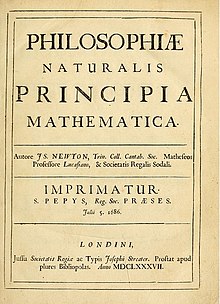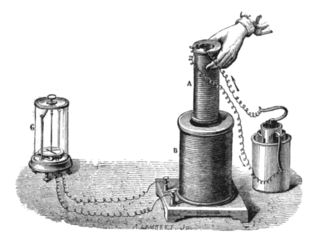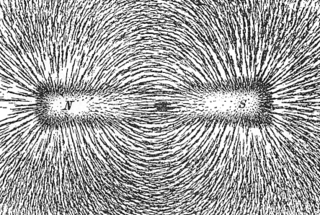
A treatise is a formal and systematic written discourse on some subject concerned with investigating or exposing the principles of the subject and its conclusions. [1] A monograph is a treatise on a specialized topic. [2]

A treatise is a formal and systematic written discourse on some subject concerned with investigating or exposing the principles of the subject and its conclusions. [1] A monograph is a treatise on a specialized topic. [2]
The word 'treatise' first appeared in the fourteenth century as the Medieval English word tretis, which evolved from the Medieval Latin tractatus and the Latin tractare, meaning to treat or to handle. [1]
The works presented here have been identified as influential by scholars on the development of human civilization.
Euclid's Elements has appeared in more editions than any other books except the Bible and is one of the most important mathematical treatises ever. It has been translated to numerous languages and remains continuously in print since the beginning of printing. Before the invention of the printing press, it was manually copied and widely circulated. When scholars recognized its excellence, they removed inferior works from circulation in its favor. Many subsequent authors, such as Theon of Alexandria, made their own editions, with alterations, comments, and new theorems or lemmas. Many mathematicians were influenced and inspired by Euclid's masterpiece. For example, Archimedes of Syracuse and Apollonius of Perga, the greatest mathematicians of their time, received their training from Euclid's students and his Elements and were able to solve many open problems at the time of Euclid. It is a prime example of how to write a text in pure mathematics, featuring simple and logical axioms, precise definitions, clearly stated theorems, and logical deductive proofs. The Elements consists of thirteen books dealing with geometry (including the geometry of three-dimensional objects such as polyhedra), number theory, and the theory of proportions. It was essentially a compilation of all mathematics known to the Greeks up until Euclid's time. [6]
Drawing on the work of his predecessors, especially the experimental research of Michael Faraday, the analogy with heat flow by William Thomson (later Lord Kelvin) and the mathematical analysis of George Green, James Clerk Maxwell synthesized all that was known about electricity and magnetism into a single mathematical framework, Maxwell's equations. Originally, there were 20 equations in total. In his Treatise on Electricity and Magnetism (1873), Maxwell reduced them to eight. [7] Maxwell used his equations to predict the existence of electromagnetic waves, which travel at the speed of light. In other words, light is but one kind of electromagnetic wave. Maxwell's theory predicted there ought to be other types, with different frequencies. After some ingenious experiments, Maxwell's prediction was confirmed by Heinrich Hertz. In the process, Hertz generated and detected what are now called radio waves and built crude radio antennas and the predecessors of satellite dishes. [8] Hendrik Lorentz derived, using suitable boundary conditions, Fresnel's equations for the reflection and transmission of light in different media from Maxwell's equations. He also showed that Maxwell's theory succeeded in illuminating the phenomenon of light dispersion where other models failed. John William Strutt (Lord Rayleigh) and Josiah Willard Gibbs then proved that the optical equations derived from Maxwell's theory are the only self-consistent description of the reflection, refraction, and dispersion of light consistent with experimental results. Optics thus found a new foundation in electromagnetism. [7]
Hertz's experimental work in electromagnetism stimulated interest in the possibility of wireless communication, which did not require long and expensive cables and was faster than even the telegraph. Guglielmo Marconi adapted Hertz's equipment for this purpose in the 1890s. He achieved the first international wireless transmission between England and France in 1900 and by the following year, he succeeded in sending messages in Morse code across the Atlantic. Seeing its value, the shipping industry adopted this technology at once. Radio broadcasting became extremely popular in the twentieth century and remains in common use in the early twenty-first. [8] But it was Oliver Heaviside, an enthusiastic supporter of Maxwell's electromagnetic theory, who deserves most of the credit for shaping how people understood and applied Maxwell's work for decades to come; he was responsible for considerable progress in electrical telegraphy, telephony, and the study of the propagation of electromagnetic waves. Independent of Gibbs, Heaviside assembled a set of mathematical tools known as vector calculus to replace the quaternions, which were in vogue at the time but which Heaviside dismissed as "antiphysical and unnatural." [9]

In physics, electromagnetism is an interaction that occurs between particles with electric charge via electromagnetic fields. The electromagnetic force is one of the four fundamental forces of nature. It is the dominant force in the interactions of atoms and molecules. Electromagnetism can be thought of as a combination of electrostatics and magnetism, two distinct but closely intertwined phenomena. Electromagnetic forces occur between any two charged particles, causing an attraction between particles with opposite charges and repulsion between particles with the same charge, while magnetism is an interaction that occurs exclusively between charged particles in relative motion. These two effects combine to create electromagnetic fields in the vicinity of charged particles, which can accelerate other charged particles via the Lorentz force. At high energy, the weak force and electromagnetic force are unified as a single electroweak force.

Heinrich Rudolf Hertz was a German physicist who first conclusively proved the existence of the electromagnetic waves predicted by James Clerk Maxwell's equations of electromagnetism. The unit of frequency, cycle per second, was named the "hertz" in his honor.

Maxwell's equations, or Maxwell–Heaviside equations, are a set of coupled partial differential equations that, together with the Lorentz force law, form the foundation of classical electromagnetism, classical optics, electric and magnetic circuits. The equations provide a mathematical model for electric, optical, and radio technologies, such as power generation, electric motors, wireless communication, lenses, radar, etc. They describe how electric and magnetic fields are generated by charges, currents, and changes of the fields. The equations are named after the physicist and mathematician James Clerk Maxwell, who, in 1861 and 1862, published an early form of the equations that included the Lorentz force law. Maxwell first used the equations to propose that light is an electromagnetic phenomenon. The modern form of the equations in their most common formulation is credited to Oliver Heaviside.

Oliver Heaviside FRS was an English self-taught mathematician and physicist who invented a new technique for solving differential equations, independently developed vector calculus, and rewrote Maxwell's equations in the form commonly used today. He significantly shaped the way Maxwell's equations are understood and applied in the decades following Maxwell's death. His formulation of the telegrapher's equations became commercially important during his own lifetime, after their significance went unremarked for a long while, as few others were versed at the time in his novel methodology. Although at odds with the scientific establishment for most of his life, Heaviside changed the face of telecommunications, mathematics, and science.

Baron Siméon Denis Poisson FRS FRSE was a French mathematician and physicist who worked on statistics, complex analysis, partial differential equations, the calculus of variations, analytical mechanics, electricity and magnetism, thermodynamics, elasticity, and fluid mechanics. Moreover, he predicted the Poisson spot in his attempt to disprove the wave theory of Augustin-Jean Fresnel, which was later confirmed.
Timeline of electromagnetism and classical optics lists, within the history of electromagnetism, the associated theories, technology, and events.

Electromagnetic or magnetic induction is the production of an electromotive force (emf) across an electrical conductor in a changing magnetic field.
Experimental physics is the category of disciplines and sub-disciplines in the field of physics that are concerned with the observation of physical phenomena and experiments. Methods vary from discipline to discipline, from simple experiments and observations, such as Galileo's experiments, to more complicated ones, such as the Large Hadron Collider.

A Treatise on Electricity and Magnetism is a two-volume treatise on electromagnetism written by James Clerk Maxwell in 1873. Maxwell was revising the Treatise for a second edition when he died in 1879. The revision was completed by William Davidson Niven for publication in 1881. A third edition was prepared by J. J. Thomson for publication in 1892.
"A Dynamical Theory of the Electromagnetic Field" is a paper by James Clerk Maxwell on electromagnetism, published in 1865. In the paper, Maxwell derives an electromagnetic wave equation with a velocity for light in close agreement with measurements made by experiment, and deduces that light is an electromagnetic wave.

Faraday's law of induction is a law of electromagnetism predicting how a magnetic field will interact with an electric circuit to produce an electromotive force (emf). This phenomenon, known as electromagnetic induction, is the fundamental operating principle of transformers, inductors, and many types of electric motors, generators and solenoids.
A line of force in Faraday's extended sense is synonymous with Maxwell's line of induction. According to J.J. Thomson, Faraday usually discusses lines of force as chains of polarized particles in a dielectric, yet sometimes Faraday discusses them as having an existence all their own as in stretching across a vacuum. In addition to lines of force, J.J. Thomson—similar to Maxwell—also calls them tubes of electrostatic inductance, or simply Faraday tubes. From the 20th century perspective, lines of force are energy linkages embedded in a 19th-century unified field theory that led to more mathematically and experimentally sophisticated concepts and theories, including Maxwell's equations, electromagnetic waves, and Einstein's relativity.
This timeline lists significant discoveries in physics and the laws of nature, including experimental discoveries, theoretical proposals that were confirmed experimentally, and theories that have significantly influenced current thinking in modern physics. Such discoveries are often a multi-step, multi-person process. Multiple discovery sometimes occurs when multiple research groups discover the same phenomenon at about the same time, and scientific priority is often disputed. The listings below include some of the most significant people and ideas by date of publication or experiment.

The history of electromagnetic theory begins with ancient measures to understand atmospheric electricity, in particular lightning. People then had little understanding of electricity, and were unable to explain the phenomena. Scientific understanding into the nature of electricity grew throughout the eighteenth and nineteenth centuries through the work of researchers such as Coulomb, Ampère, Faraday and Maxwell.
"On Physical Lines of Force" is a four-part paper written by James Clerk Maxwell, published in 1861. In it, Maxwell derived the equations of electromagnetism in conjunction with a "sea" of "molecular vortices" which he used to model Faraday's lines of force. Maxwell had studied and commented on the field of electricity and magnetism as early as 1855/56 when "On Faraday's Lines of Force" was read to the Cambridge Philosophical Society. Maxwell made an analogy between the density of this medium and the magnetic permeability, as well as an analogy between the transverse elasticity and the dielectric constant, and using the results of a prior experiment by Wilhelm Eduard Weber and Rudolf Kohlrausch performed in 1856, he established a connection between the speed of light and the speed of propagation of waves in this medium.

In the beginning of the 19th century, many experimental and theoretical works had been accomplished in the understanding of electromagnetics. In the 1780s, Charles-Augustin de Coulomb established his law of electrostatics. In 1825, André-Marie Ampère published his Ampère's force law. Michael Faraday discovered the electromagnetic induction through his experiments and conceptually, he emphasized the lines of forces in this electromagnetic induction. In 1834, Emil Lenz solved the problem of the direction of the induction, and Franz Ernst Neumann wrote down the equation to calculate the induced force by change of magnetic flux. However, these experimental results and rules were not well organized and sometimes confusing to scientists. A comprehensive summary of the electrodynamic principles was in urgent need at that time.

The Maxwellians is a book by Bruce J. Hunt, published in 1991 by Cornell University Press; a paperback edition appeared in 1994, and the book was reissued in 2005. It chronicles the development of electromagnetic theory in the years after the publication of A Treatise on Electricity and Magnetism by James Clerk Maxwell. The book draws heavily on the correspondence and notebooks as well as the published writings of George Francis FitzGerald, Oliver Lodge, Oliver Heaviside, Heinrich Hertz, and Joseph Larmor.

In the history of physics, the concept of fields had its origins in the 18th century in a mathematical formulation of Newton's law of universal gravitation, but it was seen as deficient as it implied action at a distance. In 1852, Michael Faraday treated the magnetic field as a physical object, reasoning about lines of force. James Clerk Maxwell used Faraday's conceptualisation to help formulate his unification of electricity and magnetism in his theory of electromagnetism.
The 19th century in science saw the birth of science as a profession; the term scientist was coined in 1833 by William Whewell, which soon replaced the older term of (natural) philosopher.
Mathematics, science, technology and engineering of the Victorianera refers to the development of mathematics, science, technology and engineering during the reign of Queen Victoria.